The Revolution Will Not Die With Us
More than a year ago, I started investigating my Bulgarian family history with my Bulgarian anarchist grandfather as a starting point. It’s about time to tell a bit more about the course my project took so far; it has been a turbulent one. Before I continue my story, which probably will become a bit longer than usually from my hand, I’d like to thank Stroom Den Haag and the Mondriaan Fund. This project of traveling through time and space with it’s unexpected outcome wouldn’t have been possible without their generous support and trust.
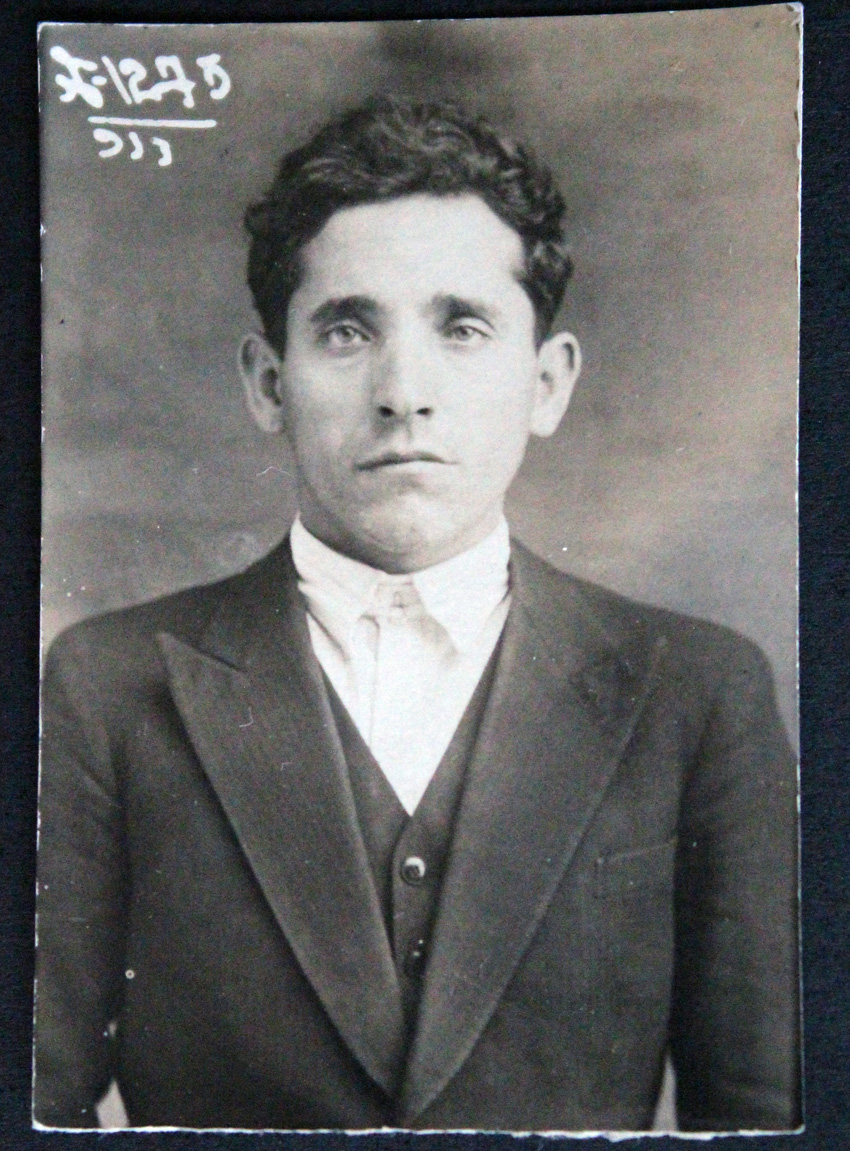
My grandfather, Panayot Civikov, was an anarchist, poet, publisher and writer. He was in conflict with the fascist regime during the Twenties and Thirties of the 20th century and after that with the communists, which often brought him for short stays into prison. His son, my father, not an anarchist, but politically engaged, had been in prison as well for a couple of years in the early Seventies. Mainly because of writing a pamphlet against how “communism” was carried out in his country. No wonder they were followed closely during these times. Numerous folders of “information” containing their history written by their environment, some stories more true than others, can be found in the archives of the former Bulgarian secret services. On top of this, my grandfather left a huge amount of (publications of) his writings, pictures taken since the Twenties by a befriended amateur photographer and cassette tapes on which he, when already in his eighties, recorded his memoires and some of his poetry.
Being aware of its existence for a while, and at the same time not knowing anything about my grandfather, this heritage of piles of information was calling me. Although he passed away not that long ago in 1998, when I was 19, I only met him twice and at a much younger age. My grandfather was the starting point of what turned out to become a journey in which a lot of lines came (and are still coming) together, creating a web connecting the past to the present on a politically social level and more close and personal on the level of family and friends.
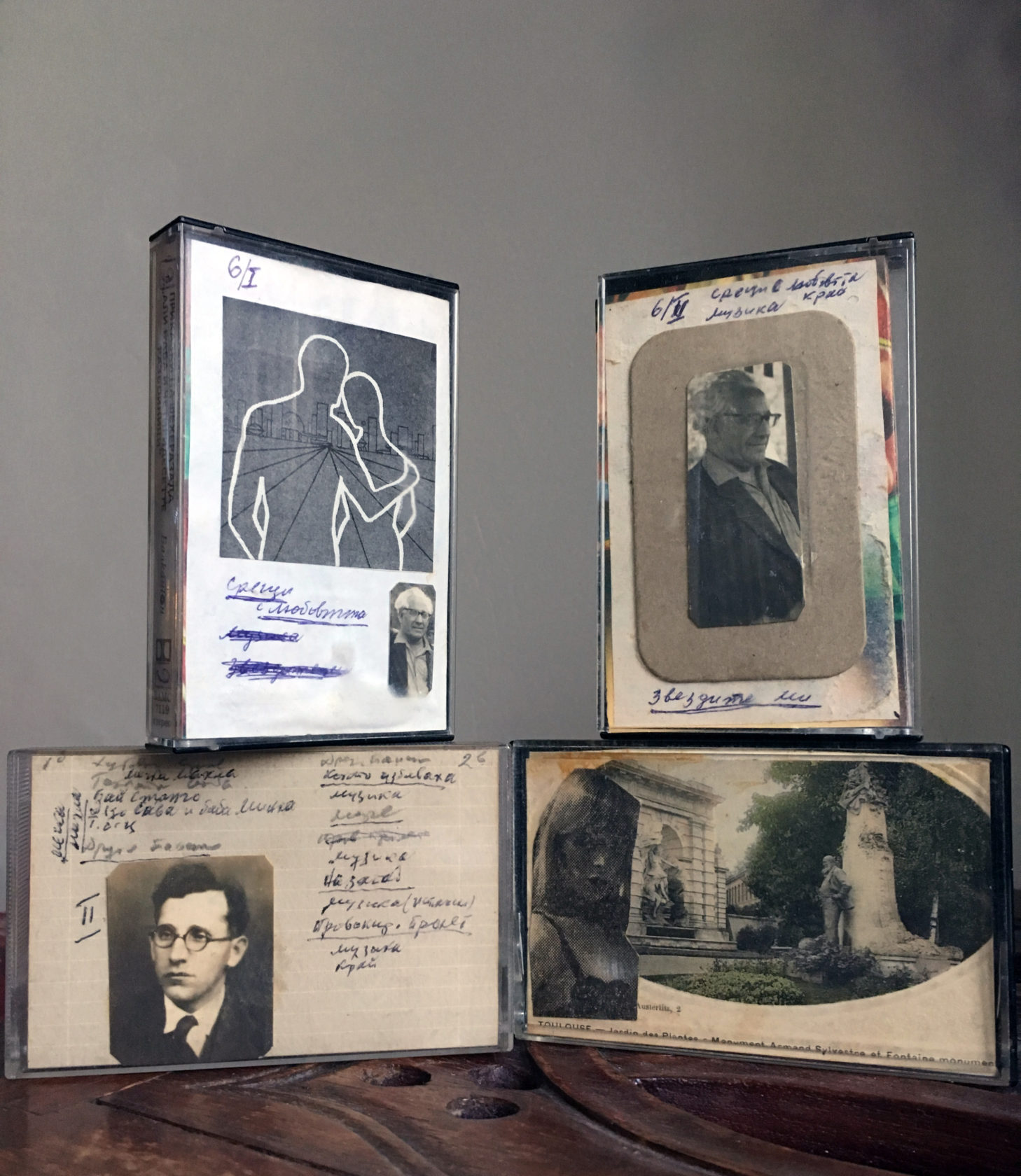

December 2016
I made a first exploratory visit to Sofia. My father came with me to make some translations at the archives of the communist-era secret service. Of course, digging in them made a lot of stories come out. The amount of information storage in long lanes of shelves filled with boxes, room after room, seemed to be endless and made a big impression on me. Earlier I wrote more about this experience on my blog. The personal stories, shaping and making the family history alive, is one part that particular interests me. Although at that time I didn’t have a clear idea of the kind of works that would come out of this project, I knew at some point I wanted to present (some of) the results in Sofia. So I also was looking and asking around for a suitable art space. The places I found were too institutional to just pop in for this purpose or too traditional, for I was searching for a space more open towards the experiment. Back home in The Hague, planning my next stay in Sofia for April 2017 (still a bit afraid of Bulgarian winters) I searched on Google Maps if there might be a nice Swimming Pool in the neighborhood. Out of the blue, I don’t even like swimming that much. And the first thing that popped up after entering “Swimming Pool Sofia” was “Swimming Pool // Space for Art” and there I found my link to Sofia’s contemporary art scene.

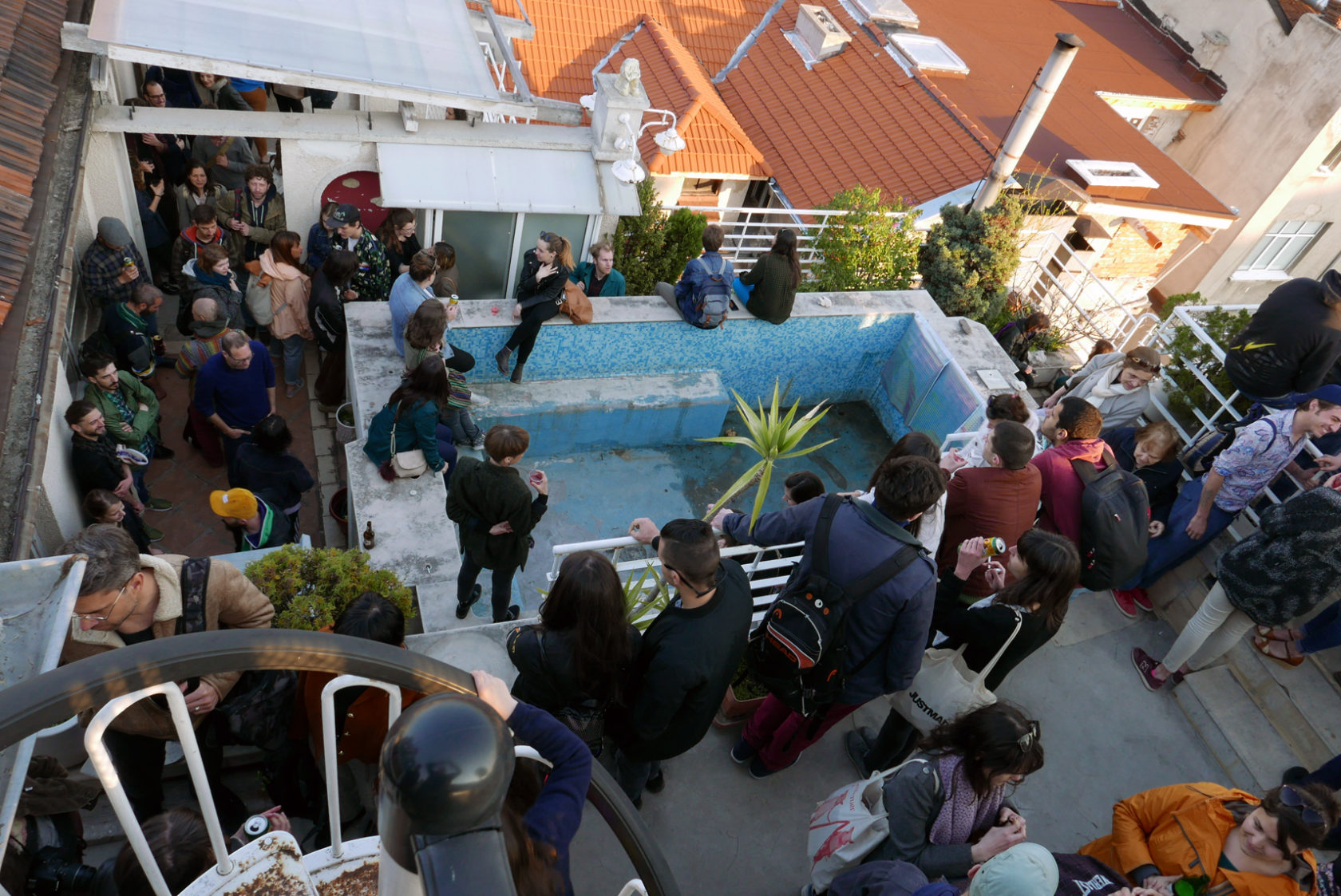
April 2017
The past months I took time to process the information I took with me in December, together with stories my father told me in between and the pictures and documents he keeps in his own private archive. I made a start with translating them into painted material. With my online discovery of Swimming Pool Art Space, I found links to a couple of other art spaces and I visited them all during my second trip to Sofia. For J&T I made a visual report; you can take a look at it here. One of them was Æther. Here I met Voin Voinov who runs it and who’s an artist as well (under the name Voin de Voin). I told him about my project and plans, and although Æther physically is small, my feeling with the space and the connection with Voin was telling me: This is it. And we agreed; in about a year we could make a presentation of whatever would come out of my back in time family trip (The opening is on May 19 and you’re all invited).
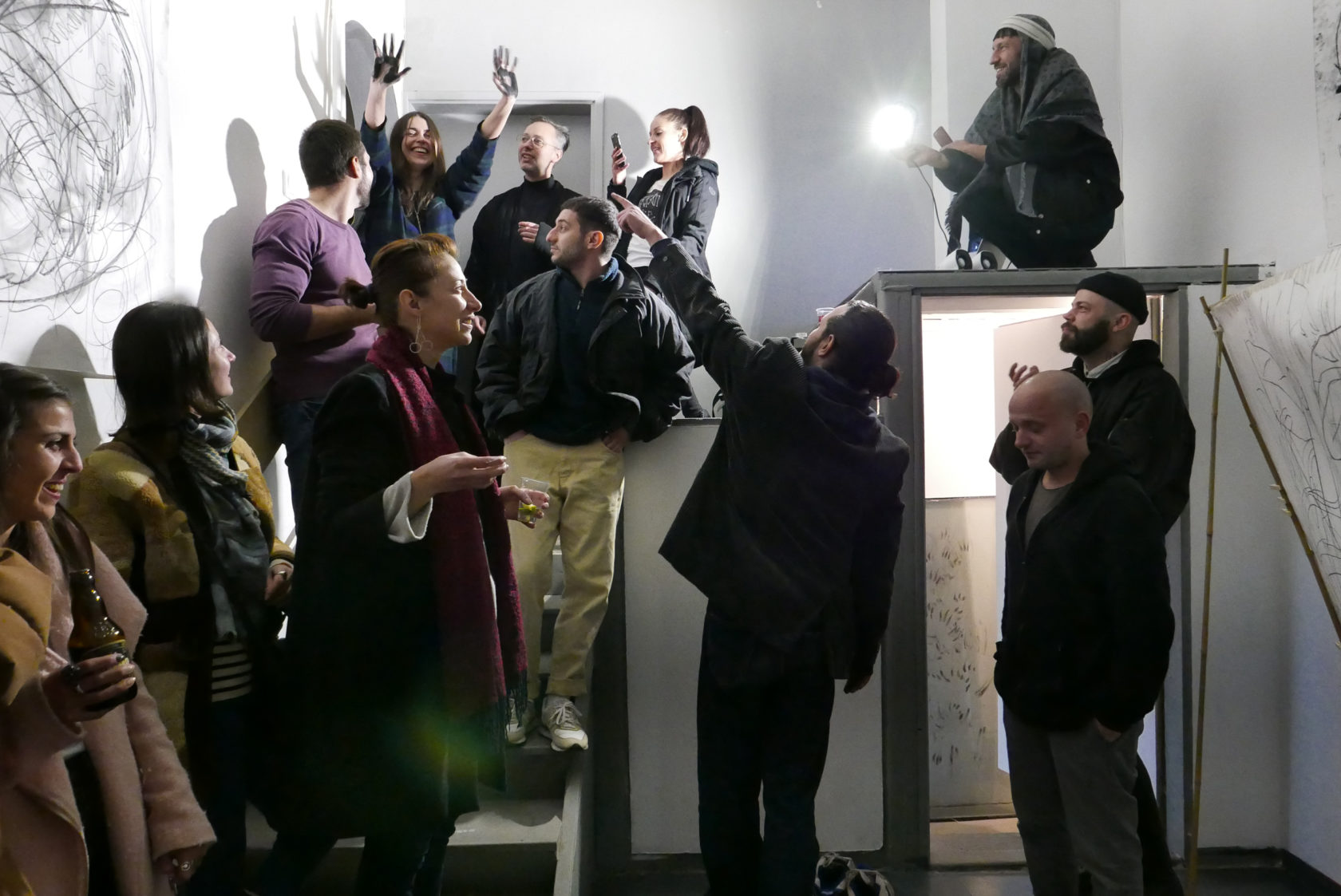
Coincidences
Starting with the way I found Swimming Pool on Google Maps, this journey is accompanied by a lot of coincidences and synchronies. Without allowing to give them a too big share in this story, I’d like to mention it feels like if they’re the thriving force pushing me or us in a certain direction. Voin is from the same generation and lived for about ten years in the Netherlands, where he studied at The Rietveld Academie and Das Arts Institute. Both having a bit of an idea of each others cultural background might be helpful for the turn we took by starting a project in which we intensively collaborate. More about this later.
Soon Voin told me about his long time wish, to research the past life of his great grandmother, Anna Voinova. She was an actress in Plovdiv in the Twenties of the last century and begin Thirties she got involved with the youth department of the agricultural Party in Sofia. She spoke out against fascism for which she ended up in prison, got tortured and paid with her life at the age of 33. With Panayot and Anna, more or less active in the same field and same decade and born in the same year of 1904, we found ourselves a parallel in our family histories. A parallel surrounded by many opposites, would soon be clear.
Unlike Anna, Panayot was one of the lucky likeminded few of his times who kept staying alive (until 1998) and was able to avoid a long stay in prison or forced labour camp (however shorter periods he experienced many times), partly by fleeing abroad. As mentioned before, the amount of information on my grandfather is huge, consisting printed matter, photographs and even cassette tapes. Voin, on the other hand, is left with one single family picture on which Anna Voinova, bright in white in the middle of a group of twelve, elegantly poses in front of the Kostenets Waterfall in the Rila mountains. Beside Anna sitting on a rock, is her husband Todor with their son on his lap; a toddler, about three years old, carrying the name Voin Voinov.

Our collaboration
More visits to Sofia followed and when I was there I got used to help out with preparing exhibitions and events at Æther, which I still do. Voin introduced me very generously into his social and family life, where I met a lot of lovely people. And the two of us, although (or maybe because of) we’re opposites in many ways, became good friends.
In June I stayed two weeks in Ruse in our family house. This house is built by my great grandfather and the two next generations are born and raised in it. Except for some renovations of the roof and necessary additions like the construction of water pipes and electricity, everything is pretty much in the original state and the house breathes family history. During my visit I made a photo report which you can find on my personal blog. And again in Ruse, last part of my stay my father came over to help me with translations during a visit of the state archives. About one particular discovery I also wrote on my personal blog. Meanwhile I kept on working, trying to put together some coherent line, out of the family stories of the past and its extension in the present I was/am creating there myself, into painted material. Partly for practical reasons, keeping in mind the transport to Bulgaria, I painted on loose unstretched pieces of canvas. This gave me the opportunity to get rid of the rectangular shape of the surface, being able to easily cut and sew it together in every way I liked. That way I suddenly had created a bird kind of shape with on the outer sides two long stretched wings. On top of it I had painted an image of my grandfather taking a walk with his twin sister (a detail I like because I have a twin brother myself) and our family house in Ruse. And I thought: I could wear this.
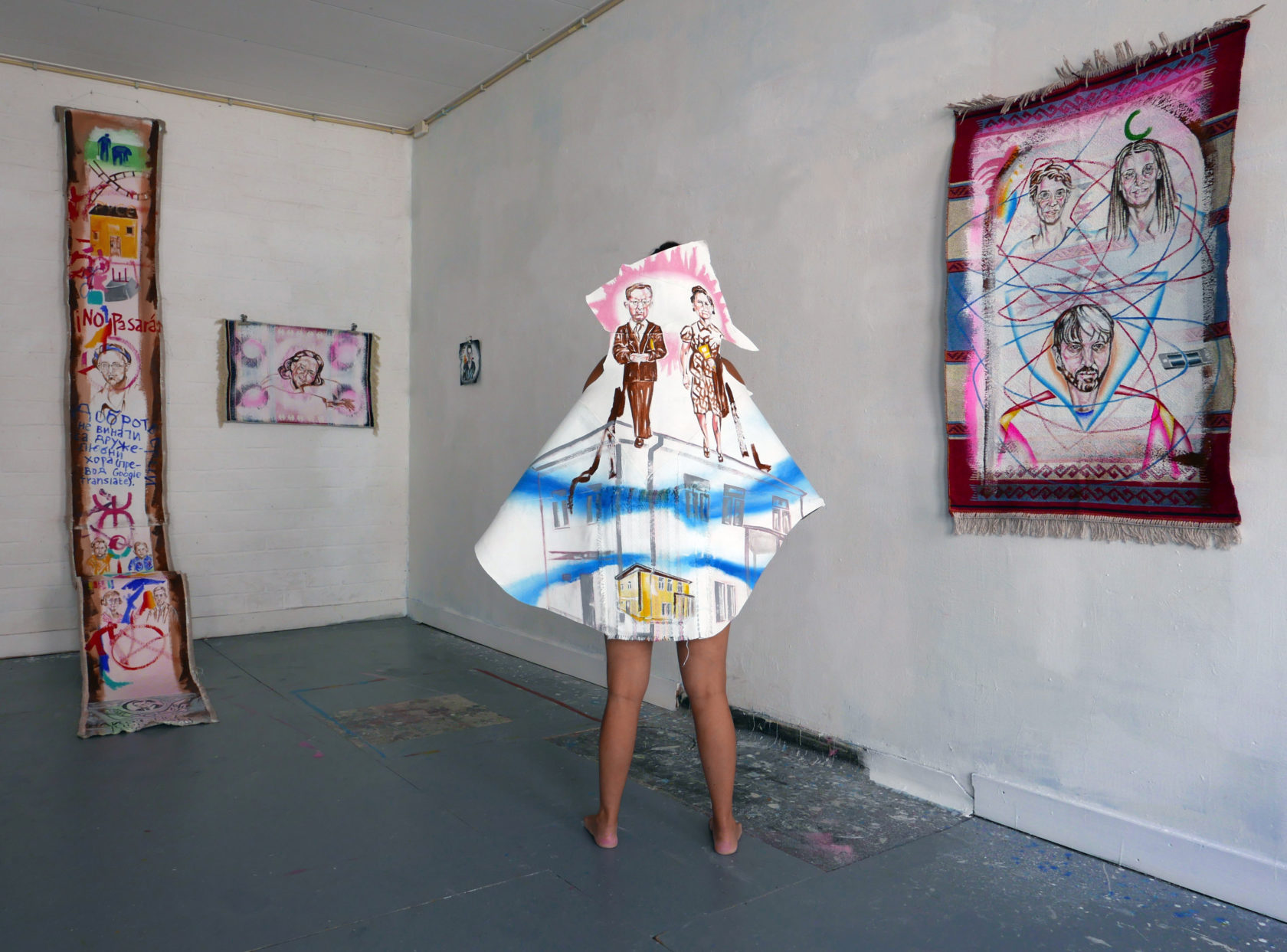
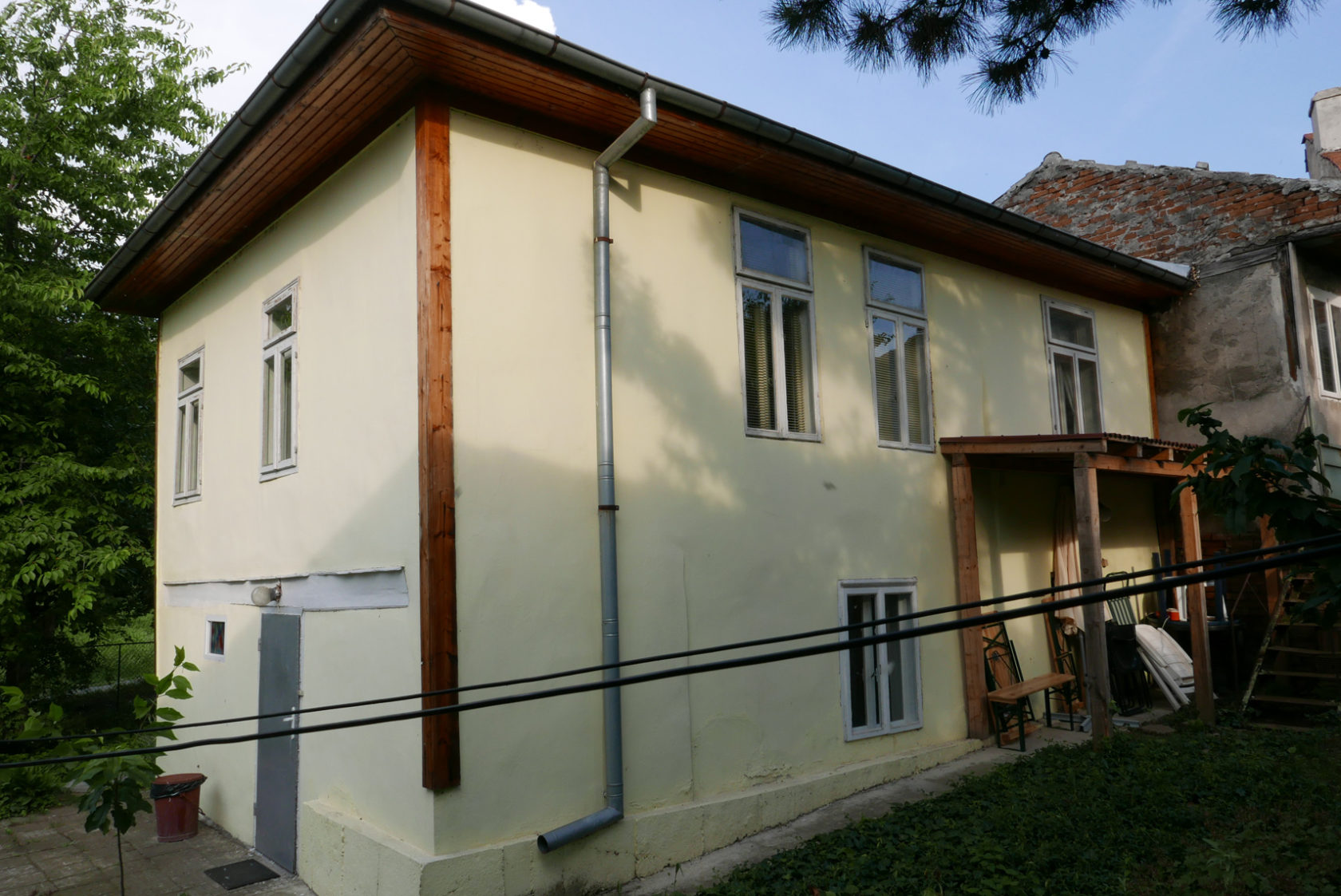
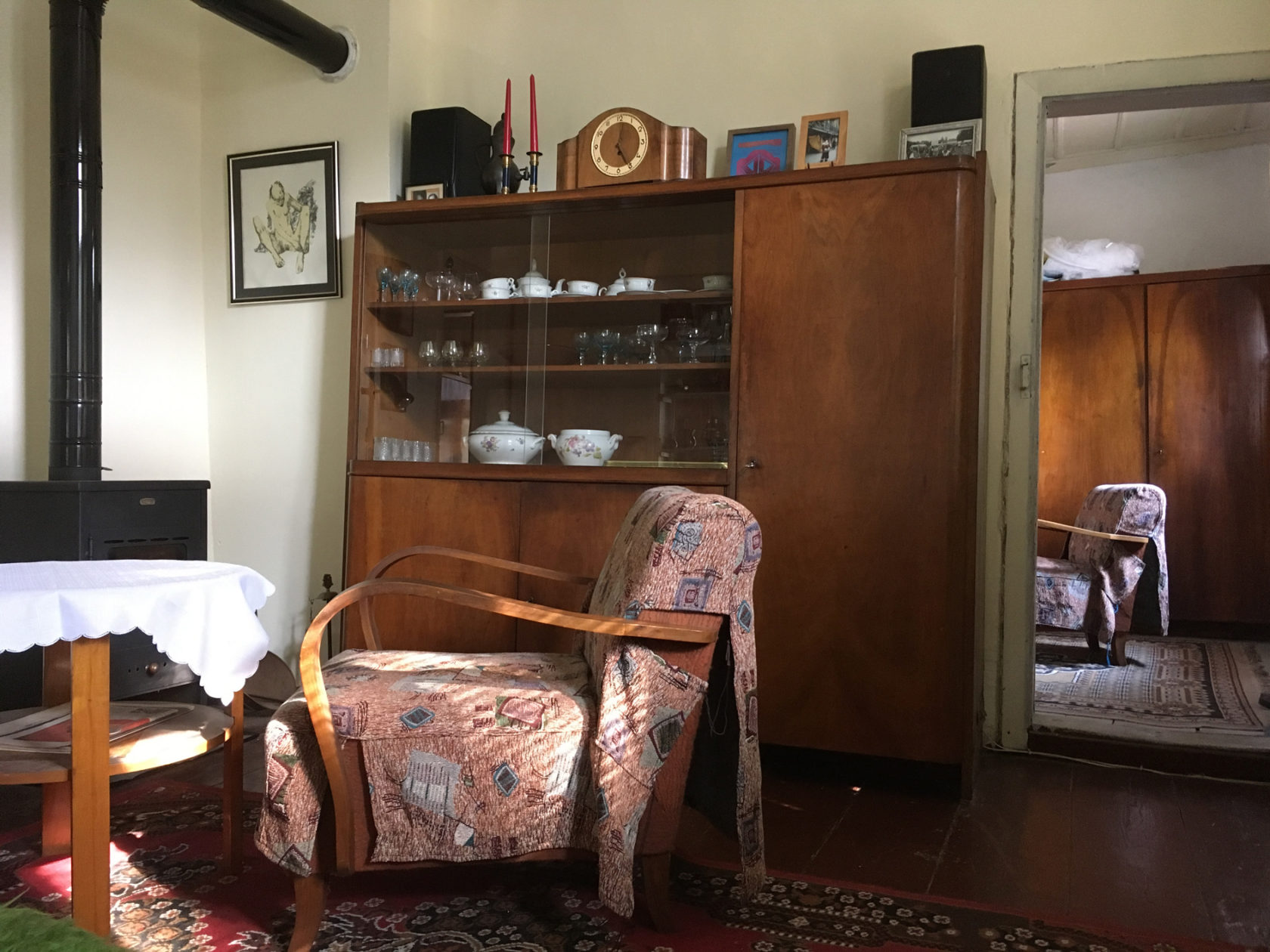
Voin had told me before in October he was invited to make an opening performance of an exhibition at the Ruse Art Gallery, in Ruse, yes this provincial city where usually isn’t that much going on and happens to be the hometown of my ancestors. No coincidence. So I thought it would be nice to be there to watch and combine it with a visit to our family house when Voin proposed: “Why don’t you join me? Let’s think about making a performance together.” My first reaction was: “Are you kidding me?” But of course, it had to be like this. Apparently without realizing, I even already had started to work on our costumes. The Revolution will not die with Us became the title of our performance in Ruse of which we soon decided it would be the first episode of a series. The idea is each of them will explore a phase in our journey from past to present in which we slowly let go the heritage of our ancestors, the archive they left us, by transforming it into our own voice. In this first part in Ruse, hometown of Panayot Civikov, in seven chapters we brought our ancestors alive.
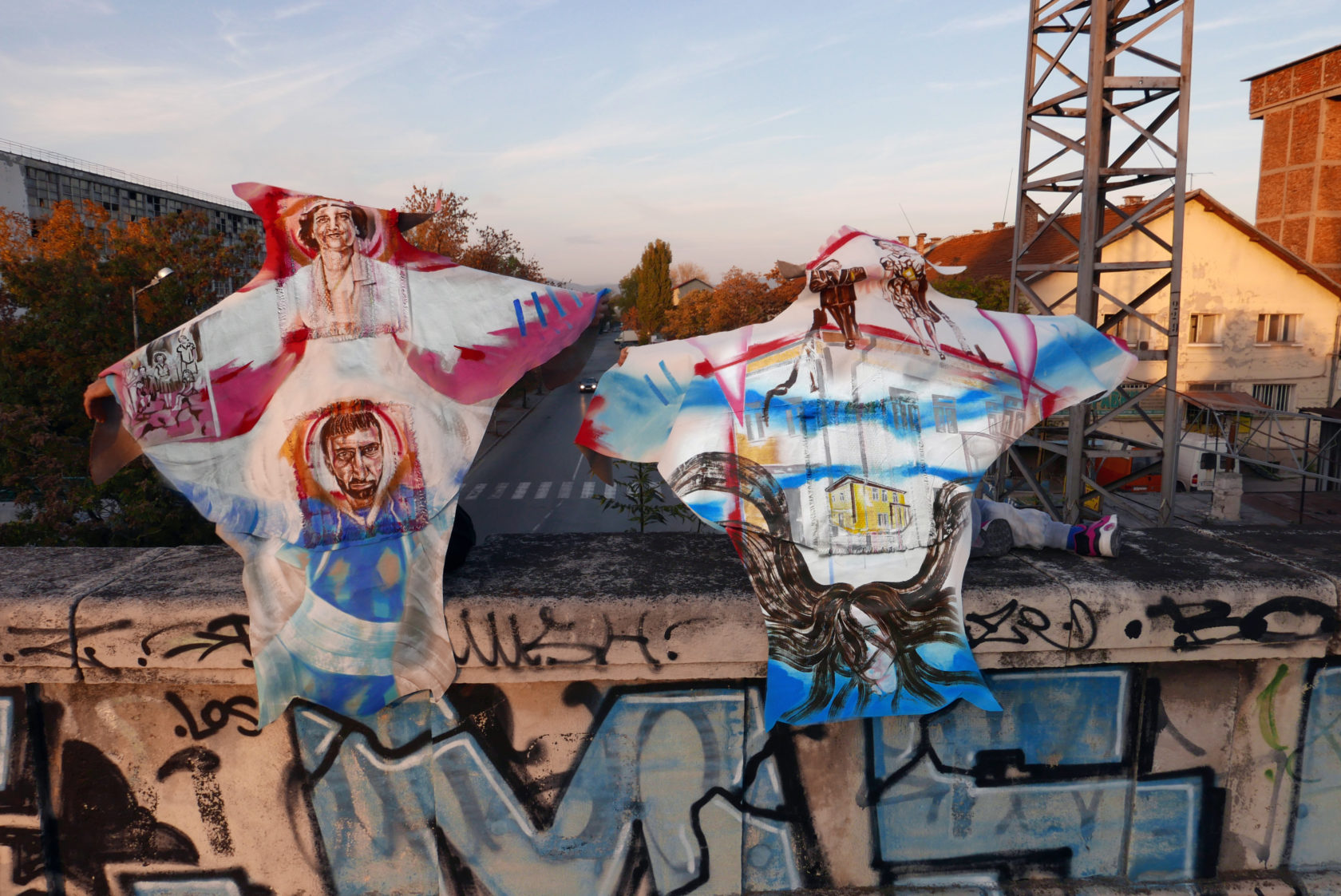
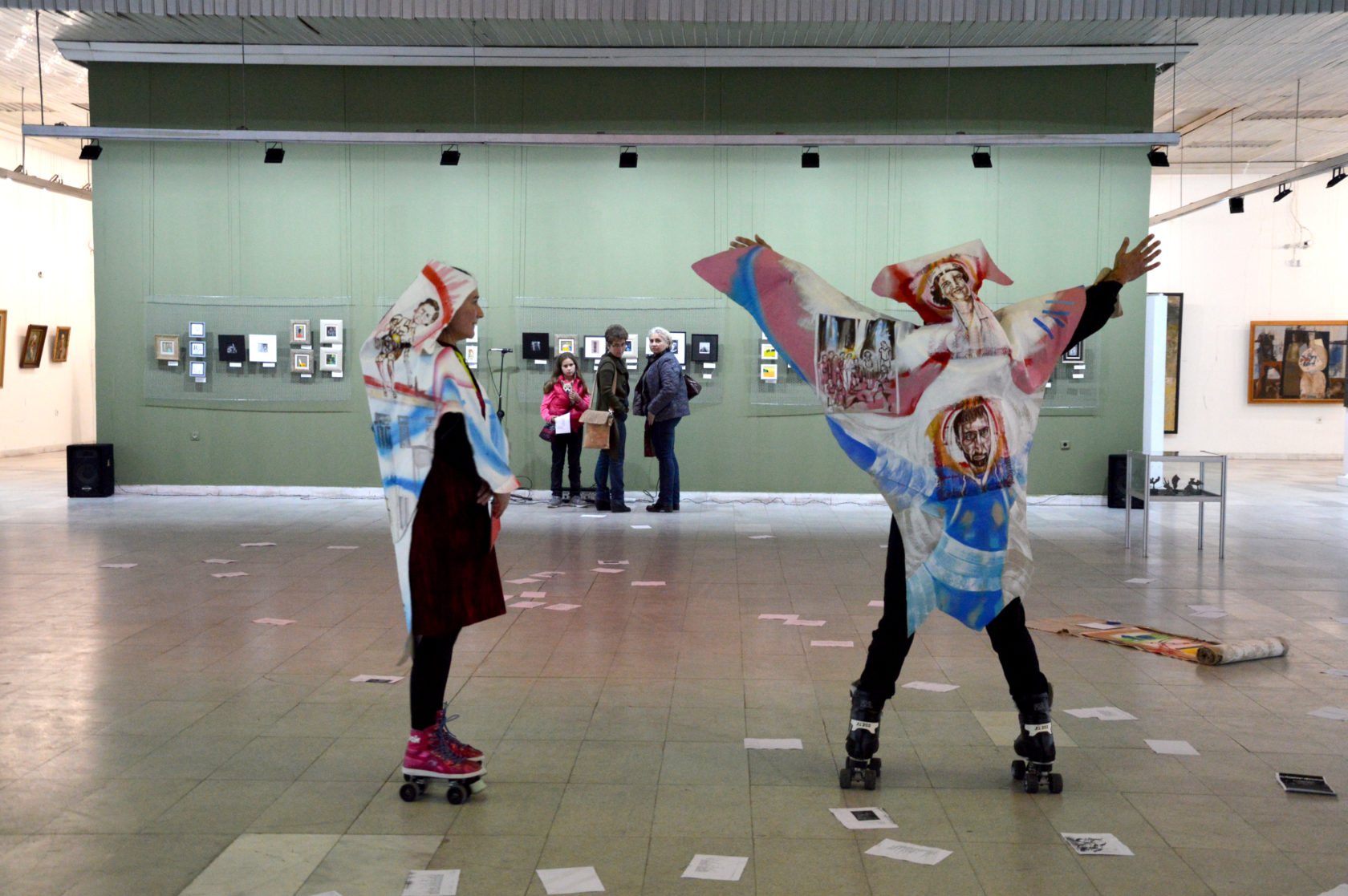
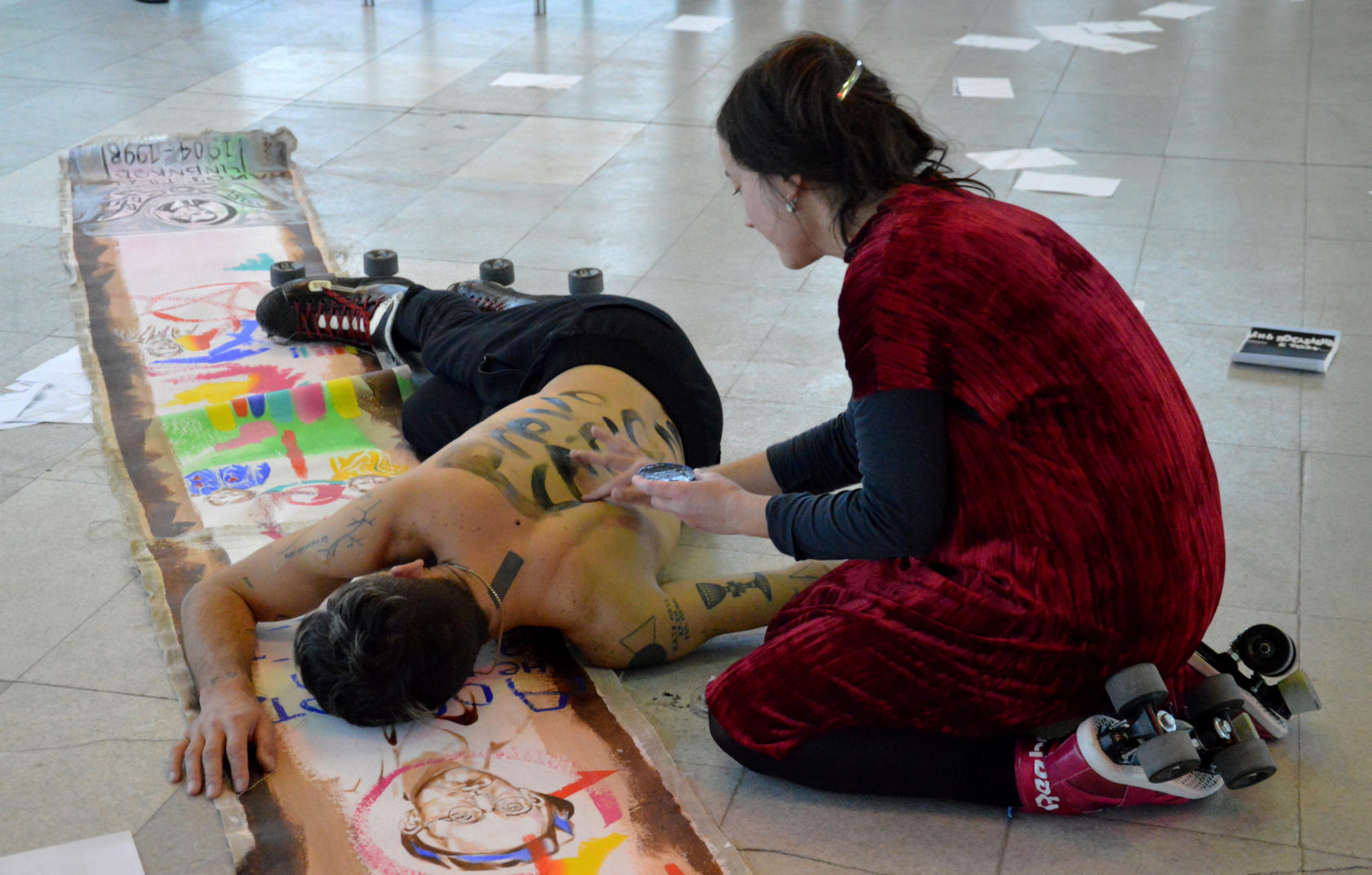
Part 2, TRWNDWU #2, Robotic Thought, took place in December at the Sofia City Art Gallery. This part was more focused on connecting Anna Voynova to Panayot Civikov and the possibility that they actually did connect and maybe still do. The title is based on the name of the anarchist newspaper, Robotniceska Misal, in which in 1933 an article of Panayot was published about police violence during a student protest in which one person got killed. Because this article was taken as seditious, Panayot got sentenced for two years in prison, for which he fled to Barcelona where he got involved in the Spanish Civil War with his fellow anarchists against Franco. Rabotniceska Misal, meaning “Workers Thought” we changed into Robotniceska Misal or Robotic Thought. Feelings of isolation, literally in prison, and also by not being able to speak out freely we linked to the idea of being caught in the digital age, locked up in your cellphone and we played with the thought of encrypted language. As a symbol to marry the revolution we decorated a whip with colorful tape hiding secret messages and smashed a collage of contemporary far right European leaders with it into pieces. The ritual was completed by the contribution of two bridesmaids. Representing the contemporary and past at the same time, dancing and singing as send from heaven guided by the music coming out of their phones.
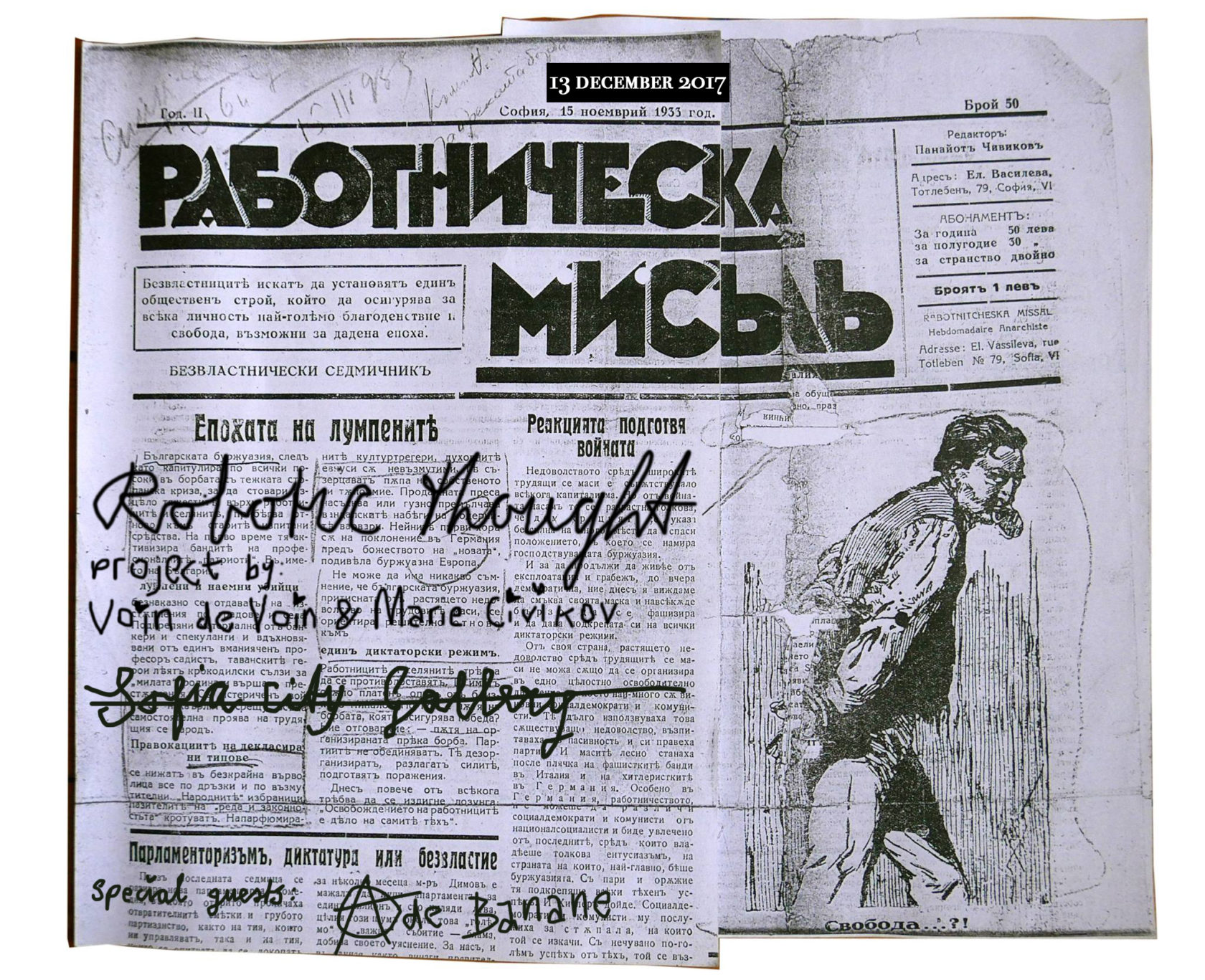

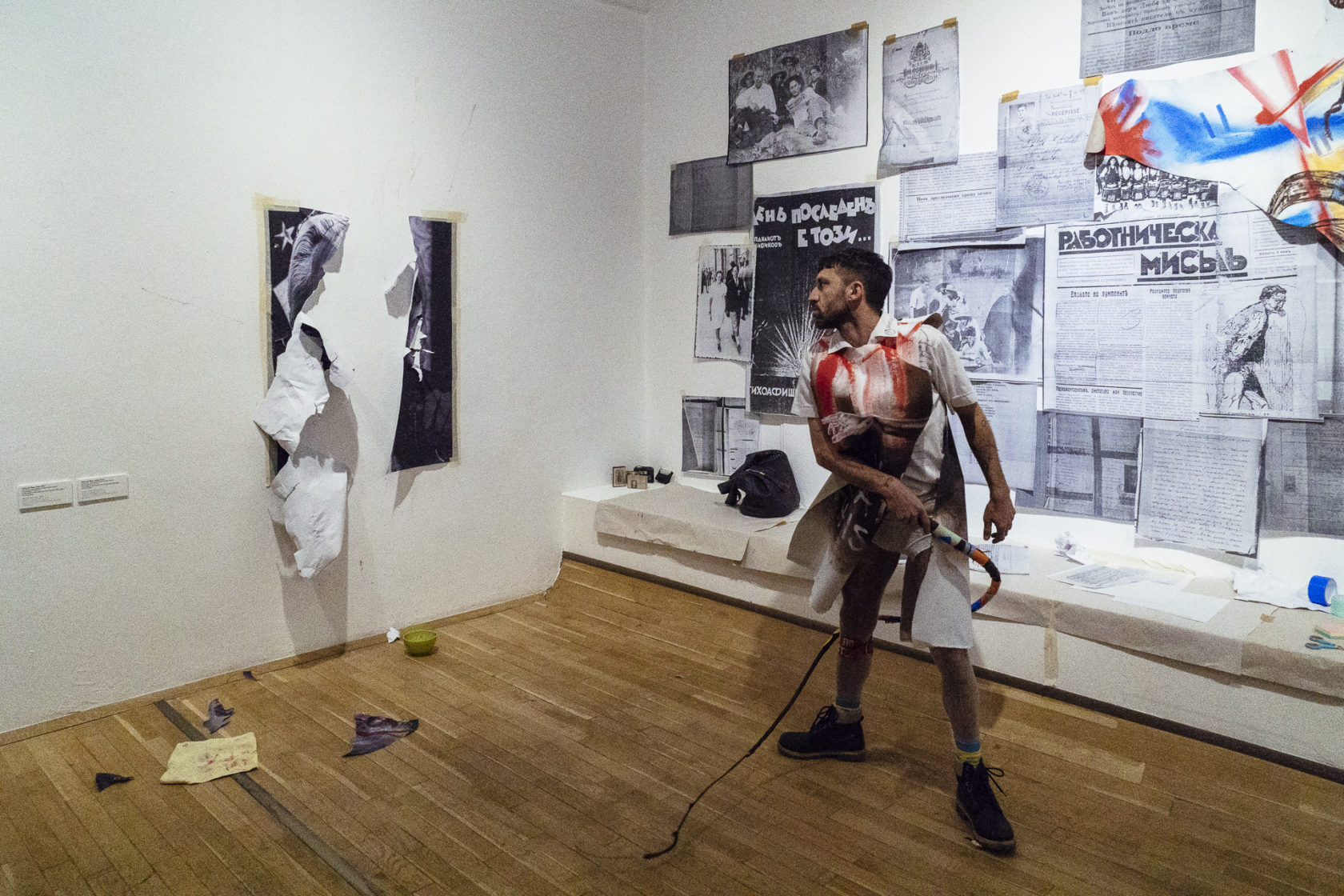

At the time of writing, we’re working on episode 3 which will take place March 17 at Ruimtevaart as part of Ground Festival. After Ruse; hometown of my ancestors and Sofia; hometown of Voin de Voin, we’re performing this third part in The Hague, where I’m born and raised. Hereby I’d like to mention we’re contributing to this festival not even because of me as an The Hague based artist, but initially by an invitation to Voin’s address in which I joined. No coincidence.
The Revolution Will Not Die With Us #3 – You have seen me in your sleep
With contribution of Radio emissions by Andrew Fremont-Smith.
March 17, 21:30 h | Ground Festival, location Ruimtevaart, Hoge Zand 42, Den Haag
